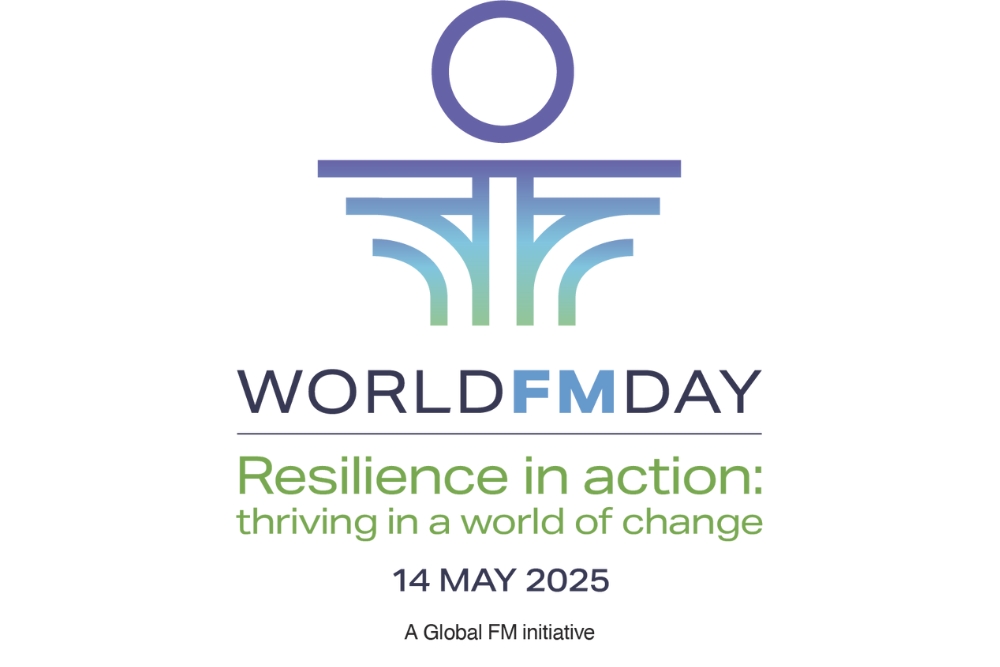Recognizing the Resilience of FMs on World FM Day
On May 14, facilities managers across the globe get the credit they’re due on World FM Day. This year’s theme, “Resilience in Action: Thriving in a World of Change,” shines a spotlight on the unsung heroes who keep our built environments safe and efficient, no matter the challenge.

Much of the facilities manager’s work goes unnoticed until something goes wrong. In today’s rapidly changing world, the FM workforce must remain resilient as their jobs are increasingly complex and vital. But resilience isn’t just a requirement for people—it’s essential for the buildings and systems they manage as well.
Why Resilience Matters More than Ever
The jobs of FMs are becoming more demanding as facilities are threatened in drastic and unexpected ways, from climate change to technological disruptions.
Being resilient in the face of these risks is no longer a nice-to-have; it’s a necessity for the health, safety, and financial future of every organization. According to S&P Global, over 90% of the world’s largest companies will have at least one asset that is highly exposed to the physical hazards of climate change by 2050. In the U.S., the National Oceanic and Atmospheric Administration reported nearly 30 instances of billion-dollar natural disasters in 2024 alone.
How do FMs rise to the difficulties they face? It starts with a mindset—and a plan—to prepare for, withstand, and recover from any disruption.
Maintaining Resilient Buildings
FMs may be increasingly called to balance long-term goals like sustainability with the immediate need to safeguard facilities against disruption. Resilience and risk planning bridges both, ensuring buildings are not only efficient but equipped to endure and adapt.
Crisis Management Planning and Preparedness
Resilience planning extends to all types of disruptions. FMs must anticipate and respond to natural disasters such as floods, hurricanes, wildfires, and water scarcity; security threats including crime and terrorism; cybersecurity breaches; biological hazards like pandemics and infection control; and energy instability.
Developing a robust continuity of operations plan (COOP) for all buildings in the portfolio is essential. These plans document how essential functions will continue during and after disruptive events, ensuring minimal downtime and rapid recovery.
To support these plans, current and future FMs can get ahead of potential crises like climate challenges by upgrading infrastructure to withstand extreme weather, like installing advanced cooling systems to combat rising temperatures; implementing smart irrigation and upgraded drainage to prevent flood damage; and investing in energy-efficient systems to ensure stability during power disruptions.
These measures not only protect assets but also ensure the health and comfort of building occupants.
Risk Comprehension
Data can be pulled from core systems, engineering, and modelling assessments. These data help FMs understand the safety and conditions of facilities across their portfolio, helping prioritize facility fixes and quickly make the case for high-funded decisions that may arise. Once risks are understood, targeted mitigation strategies can be implemented.
Risk Mitigation
The impacts of effective cooling systems will become increasingly important for the health and comfort of people as temperatures rise, and upgraded drainage systems and smart irrigation systems may become necessities to prevent building damage.
Also, to prepare for the worst, FMs should develop post-disruption recovery plans. For further insights on emergency preparedness, read “FMs, Resilience, and Risk Management” on Facilities Management Advisor.
The Human Side: FM Industry Resilience
While FMs focus on incorporating resilience into their facilities, the profession itself faces its own challenges to resilience, such as short staffing. Much of the FM workforce is expected to retire soon, and the skilled labor market overall is struggling to fill jobs due to a lack of qualified candidates.
Some experts say that upskilling can help solve the staffing issues in FM, but retaining staff is key, too.
RICS, a global professional body that helps create and protect built and natural environments, offers four messages for more resilience in facilities management at large: First, instilling the understanding in organizations that frontline workers matter: FM is where the built environment delivers for people, making FMs the first line of defense in any crisis. Second, FMs are crucial to the occupants’ well-being and comfort, which leads to better productivity. Third, digital delivers: Investing in digital capabilities empowers FMs and their teams to succeed. Finally, leaders must tune into the expertise of FMs in strategic decision-making to ensure their assets stay sturdy with whatever issues transpire.
As World FM Day reminds us, the resilience of facilities managers is not just about enduring change—it’s about leading the way to safer, smarter, and more sustainable built environments in an unpredictable world.
Ali Hickerson is a freelance journalist, content writer, and strategist based in Brooklyn, N.Y. Outside of Facilities Management Advisor, Ali’s recent bylines on health and workplace issues have crisscrossed the country and helped advocate for programs and policies that work to create a healthier, more humane, and equitable world.
ALSO WATCH: Facility Pros Celebrate World FM Day (2024)!
The post Recognizing the Resilience of FMs on World FM Day appeared first on Facilities Management Advisor.

